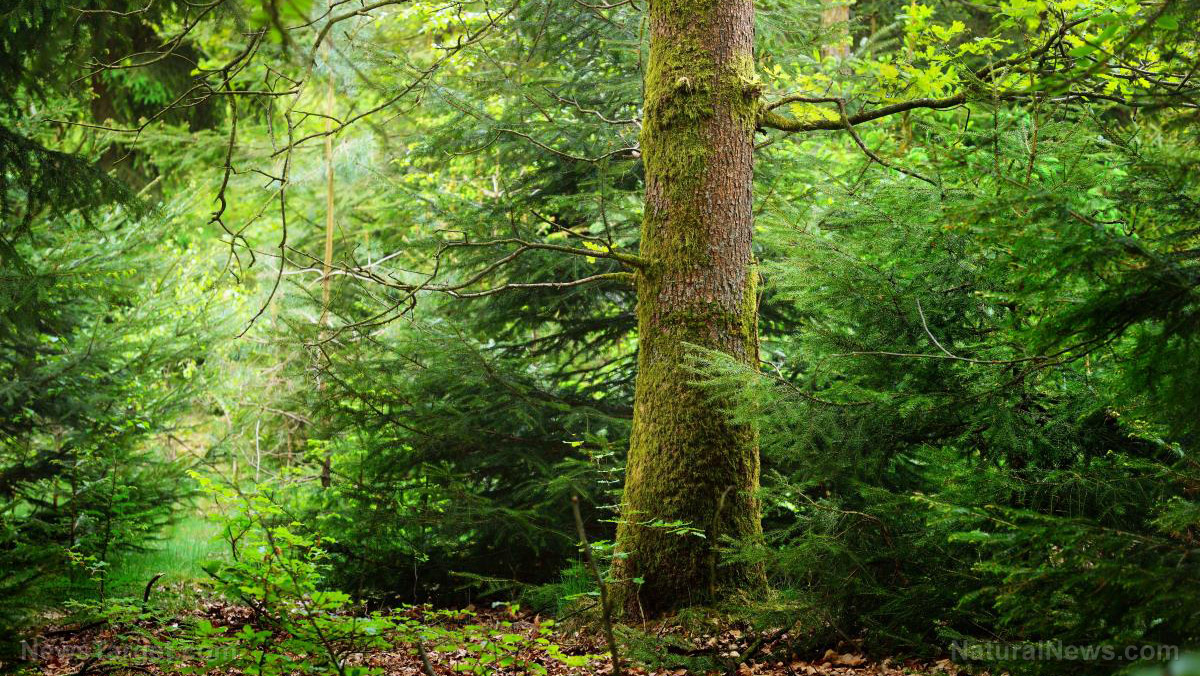Beyond wood and bark: Survival materials from trees also include sap, resin, and pitch
05/31/2018 / By Zoey Sky

Aside from providing us with yummy syrup for our pancakes, did you know that sap, along with resin and pitch, has survival uses? (h/t SurvivalSullivan.com.)
When possible, try to gather naturally occurring resin. This means sourcing material from a tree that is already secreting sap instead of intentionally taking sap from an undamaged tree. Take note that the best time for collecting sap is during early spring when the sap is running. You can also do this during other times of the year, but with greatly reduced results.
If you must cut a tree for sap or pitch, use a method called the “V-cut.” This involves taking a knife or hatchet and cutting a “V” shape into the tree. Take a stick that’s sharpened to a point and flattened, then insert it into the bottom of the “V” so the sap runs and drips off the sticks into a collection vessel.
If you locate a tree with naturally occurring injury areas, simply collect the hardened resin from these areas. Once you collect the resin, mix it with charcoal dust to create a form of pitch. Take note that the terms “pitch” and “resin” are often used interchangeably.
You can also try another method of collecting sap called boring and tapping. This method lets you gather greater quantities of sap by boring a hole at least one and a half to two inches deep, then driving a spout into the hole. When people gathered sap in the past, they often hung a bucket from the spout to gather the sap that was used to make syrup. However, with modern methods tubing can be run from all the tree taps into a larger tube, then run the larger tubes into the container or directly into a building. Since sap from the trees goes directly to the collection vessel or boiling pot, you don’t have to worry about insects getting into the sap.
GLYPHOSATE testing is now being applied to all Health Ranger Store branded products. Our in-house lab uses LC-MS-MS (triple quad mass spec). See the full lab science tour video and announcement here. Shop for ultra-clean, lab-tested superfoods, personal care products and more at the Health Ranger Store, the world's most trusted source for clean foods and lab-verified nutritional solutions.
Sap is often watery, and it is used to make pancake syrup. However, only sap from a sugar maple tree can be used for syrup. If you look closely at a tree trunk, the clear liquid that drips from a cut is the sap. Sap often oozes when a tree is “bleeding,” and when the wound “scabs,” sticky resin forms. (Related: How to use sticky pine sap to survive in the wild: treating rashes, starting fires and more.)
Meanwhile, the sticky stuff that may get on you when you are working with green pine trees is called pitch. It is a sticky substance thicker than sap.
If you return to a tree that you have previously collected sap from, the cut you made will be covered in a thickened material. This is resin, and it is liquid sap that has formed to seal the “wound” on trees to protect it from contamination.
Survival uses for sap, resin, and pitch
Sap can be used as a natural adhesive. You can also use resin and pitch in a similar way.
Pitch can also be used to start fires. You can make your own pitch torch by covering the end of a stick with pitch, which you can then light on fire.
Resin can also be used as an adhesive. To make natural “hot glue,” heat some resin. Use the thick liquid to bind materials together. In a pinch, you can also use sticky resin from a pine tree to close a wound.
When you find yourself stranded and running out of sustenance, you can drink sap directly from certain kinds of trees. Sap from some trees has a “fairly high sucrose content,” such as sugar maples that are used to make maple syrup, which has at least two percent sucrose. In a survival situation, some maple sap can help restore your energy and hydrate you.
There are also several other uses for pine sap and pitch. Pine sap can be used as a topical antiseptic and it can be chewed to help soothe a sore throat.
You can read more articles about the other uses of tree sap, resin, and pitch at Preparedness.news.
Sources include:
Tagged Under: bug out, Collapse, disaster, multipurpose survival tools, off grid, pitch, preparedness, prepper, prepping, remedies, resin, sap, SHTF, survival, survival skills, survival tools, tree sap, trees




















